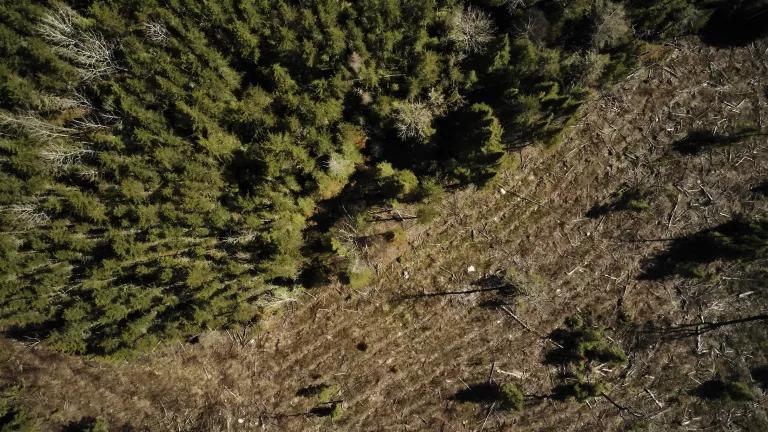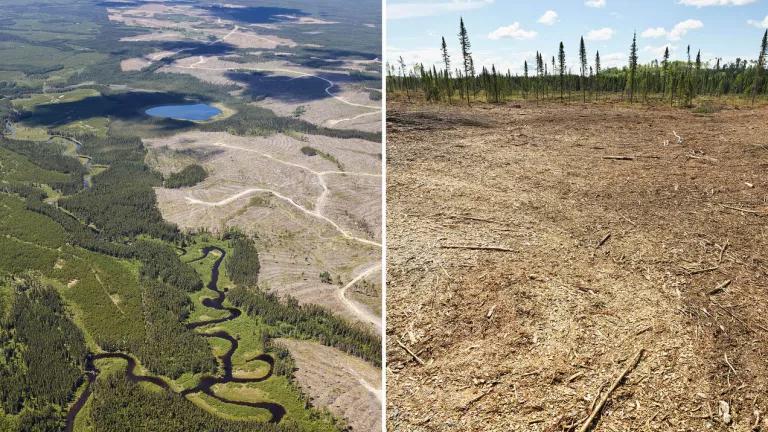Indigenous-Led Land Protection Is Key to Canada’s Future
A truly just, sustainable future is impossible without centering the leadership, vision, and knowledge of Indigenous Peoples.

A truly just, sustainable future is impossible without centering the leadership, vision, and knowledge of Indigenous Peoples. In Canada, like around the world, while policymakers have failed to rein in the industries driving unsustainable ecosystem loss and climate change, Indigenous Peoples have led the way on managing and stewarding the lands they have called home for millennia. Now, thanks to the Canadian government’s recognition of the environmental and human rights imperative of investing in Indigenous-led land protection, dozens of Indigenous Nations, communities, and organizations across Canada will have the support they need to manage and steward some of the world’s most treasured and essential landscapes.
Last fall, Canada made the unprecedented investment of C$175 million in 67 conservation initiatives across every province and territory. This announcement was a key step toward achieving the country’s commitment to protect 17% of its lands by 2020 and 25% by 2025. The Canadian government has now unveiled details about those initiatives, providing a map that shows the scale and scope of these globally vital projects. From Innu-led species protection in Newfoundland and Labrador and Cree-designed protected areas in Quebec to the expansion of Thaidene Nëné National Park Reserve in the Northwest Territories, these conservation initiatives are a critical means of empowering Indigenous Peoples to determine the future of their own lands.
The benefits of these Indigenous-led projects will reverberate internationally. Violence to people and violence to place are inextricable, and the world cannot confront climate change and species collapse without dismantling the systems that devalue both lands and peoples. Around the world, where Indigenous rights to their lands are strong, biodiversity and climate-critical carbon stores are better protected. And in Canada, which boasts the most intact, carbon-dense forest in the world and biodiversity found nowhere else on earth, Indigenous-led stewardship is especially critical.
Canada’s boreal forest, for example, stores twice as much carbon as the world’s oil reserves and is the summer nesting ground of billions of migratory birds each year. Yet Canada’s forests are some of the least protected globally, and each minute Canada loses an area of boreal forest the size of a small city block. In the face of rampant industrial expansion, Indigenous Peoples have been the leading voices for protecting Canada’s vital ecosystems.
As Valérie Courtois, the Director of the Indigenous Leadership Initiative, commented, “Indigenous Nations are at the forefront of managing and caring for lands and waters across the country. Partnerships between Indigenous Nations and Canada support this conservation leadership, and together we can meet our shared goals to protect nature and the climate.”
Canada’s investment in Indigenous-led land protection can’t stop here, however. As the Canadian government looks to invest in the recovery and revitalization of the country’s economy in the wake of COVID-19, initiatives to expand Indigenous protection and management of the land should be front and center. These measures, which bring much-needed jobs to rural areas, should include new protected areas but also further investment in stewardship initiatives like Indigenous Guardians Programs. Studies have shown Guardians Programs could generate a return of $3.70 in social, cultural, economic, and environmental benefits for every dollar invested.
And, even while Canada has made this historic commitment, all too often Indigenous Peoples are still left out of decisions about their traditional territories. While Canada has fully endorsed the United Nations Declaration on the Rights of Indigenous Peoples, which articulates Indigenous Peoples’ right to free, prior and informed consent (FPIC) for any activities happening on their land, this right is still not enshrined in Canadian law.
The Waswanipi Cree, for example, have been working to protect some of their last intact forests for nearly two decades, but these areas are still at imminent risk of logging. In some cases, Indigenous Peoples have been forced to physically guard their land against unwanted industrial development. And everywhere, Indigenous Peoples, just like other people of color, have to contend with institutionalized violence, even on their own traditional territories. This systemic disenfranchisement and racism that plagues Canada’s laws and regulations are incompatible with both reconciliation and a sustainable future.
With this announcement, Canada has set a global example around Indigenous rights and environmental protection. But it needs to ensure that this work doesn’t happen in a vacuum—it needs to continue to invest in Indigenous leadership and work to correct the institutionalized marginalization of both Indigenous Peoples and the environment in its laws and systems. Canada still has a long way to go in addressing its colonialist legacy and meeting its global environmental commitments. Justice and sustainability are inextricably linked, and we can’t achieve one without the other.




